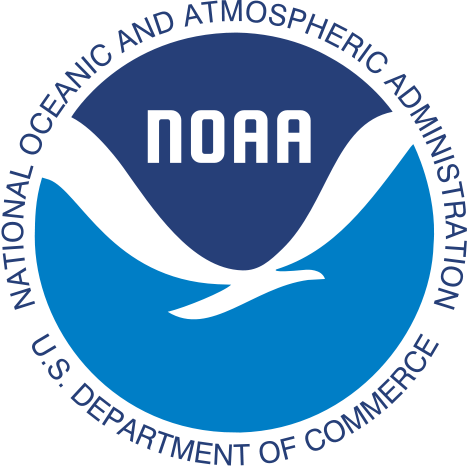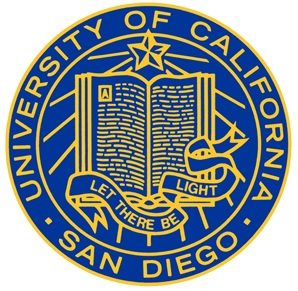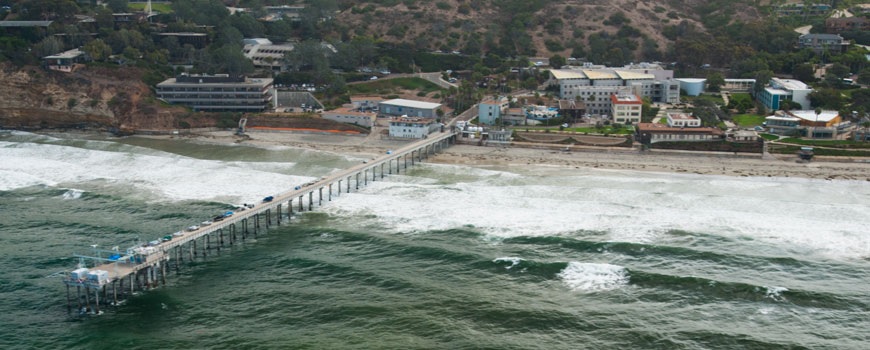From The National Oceanic and Atmospheric Administration
And
The Scripps Institution of Oceanography
At
The University of California-San Diego
6.6.24
Carbon dioxide is accumulating in the atmosphere faster than ever — accelerating on a steep rise to levels far above any experienced during human existence, scientists from NOAA and the Scripps Institution of Oceanography at the University of California San Diego announced today.
The two-year increase in Keeling Curve peak is the largest on record.
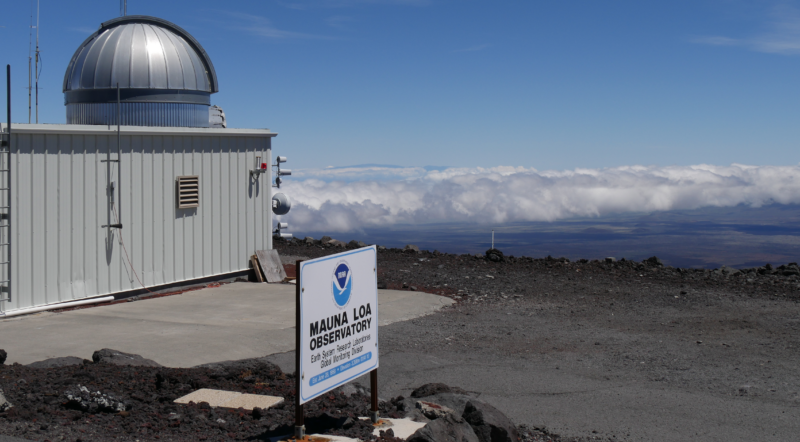
Atmospheric carbon dioxide measured at NOAA’s Maunaloa Atmospheric Baseline Observatory peaked in May 2024 at a monthly average of 426.9 parts per million, establishing another high mark in the 66-year record of observations on the Hawai’ian volcano, according to scientists from NOAA and Scripps Institution of Oceanography at the University of California San Diego. (2019 photo of observatory grounds on the Big Island of Hawai’i.) (Image credit: Susan Cobb/NOAA Research)
Levels of carbon dioxide (CO2) measured at NOAA’s Maunaloa Atmospheric Baseline Observatory by NOAA’s Global Monitoring Laboratory surged to a seasonal peak of just under 427 parts per million (426.90 ppm) in May, when CO2 reaches its highest level in the Northern Hemisphere. That’s an increase of 2.9 ppm over May 2023 and the 5th-largest annual growth in NOAA’s 50-year record. When combined with 2023’s increase of 3.0 ppm, the period from 2022 to 2024 has seen the largest two-year jump in the May peak in the NOAA record.
Scientists from NOAA and the Scripps Institution of Oceanography in San Diego announced on June 6, 2024, that carbon dioxide is accumulating in the atmosphere faster than ever. They said it is accelerating on a steep rise to levels far above any experienced during human existence.
Levels of carbon dioxide (CO2) measured at NOAA’s Maunaloa Atmospheric Baseline Observatory by NOAA’s Global Monitoring Laboratory surged to a seasonal peak of just under 427 parts per million (426.90 ppm) in May 2024. May is when CO2 reaches its highest level in the Northern Hemisphere. That’s an increase of 2.9 ppm over May 2023 and the 5th-largest annual growth in NOAA’s 50-year record. When combined with 2023’s increase of 3.0 ppm, the period from 2022 to 2024 has seen the largest two-year jump in the May peak in the NOAA record.
Carbon dioxide measurements sending ominous signs
Scientists at Scripps, the organization that initiated CO2 monitoring at Mauna Loa in 1958 and maintains an independent record, calculated a May monthly average of 426.7 ppm for 2024, an increase of 2.92 ppm over May 2023’s measurement of 423.78 ppm. For Scripps, the two-year jump tied a previous record set in 2020.
From January through April, NOAA and Scripps scientists said CO2 concentrations increased more rapidly than they have in the first four months of any other year. The surge has come even as one highly regarded international report has found that fossil fuel emissions, the main driver of climate change, have plateaued in recent years. NOAA Administrator Rick Spinrad said:
“Over the past year, we’ve experienced the hottest year on record, the hottest ocean temperatures on record and a seemingly endless string of heat waves, droughts, floods, wildfires and storms.
Now we are finding that atmospheric CO2 levels are increasing faster than ever. We must recognize that these are clear signals of the damage carbon dioxide pollution is doing to the climate system, and take rapid action to cut fossil fuel use as quickly as we can.”
Ralph Keeling, director of the Scripps CO2 program that manages the institution’s 56-year-old measurement series, noted that year-to-year increase recorded in March 2024 was the highest for both Scripps and NOAA in Keeling Curve history. He said:
“Not only is CO2 now at the highest level in millions of years, it is also rising faster than ever.
Each year achieves a higher maximum due to fossil-fuel burning, which releases pollution in the form of carbon dioxide into the atmosphere. Fossil fuel pollution just keeps building up, much like trash in a landfill.”
Like a giant heat-trapping blanket
Like other greenhouse gases, CO2 acts like a blanket in the atmosphere, preventing heat radiating off of the planet’s surface from escaping into space. The warming atmosphere fuels extreme weather events, such as heatwaves, drought and wildfires, as well as heavier precipitation and flooding. About half of the carbon dioxide humans release into the air stays in the atmosphere. The other half is absorbed at Earth’s surface, split roughly equally between land and ocean.
The record two-year growth rate observed from 2022 to 2024 is likely a result of sustained high fossil fuel emissions combined with El Nino conditions limiting the ability of global land ecosystems to absorb atmospheric CO2, said John Miller, a carbon cycle scientist with NOAA’s Global Monitoring Laboratory. The absorption of CO2 is changing the chemistry of the ocean, leading to ocean acidification and lower levels of dissolved oxygen, which interferes with the growth of some marine organisms.
A longstanding scientific partnership
For most of the past half century, continuous daily sampling by both NOAA and Scripps at Maunaloa provided an ideal baseline for establishing long-term trends. In 2023, some of the measurements were obtained from a temporary sampling site atop the nearby Maunakea volcano, which was established after lava flows cut off access to the Maunaloa Observatory in November 2022. With the access road still buried under lava, staff have been accessing the site once a week by helicopter to maintain the NOAA and Scripps in-situ CO2 analyzers that provide continuous CO2 measurements.
Scripps geoscientist Charles David Keeling initiated on-site measurements of CO2 at NOAA’s Maunaloa weather station in 1958. Keeling was the first to recognize that CO2 levels in the Northern Hemisphere fell during the growing season and rose as plants died in the fall. He documented these CO2 fluctuations in a record that came to be known as the “Keeling Curve”. He was also the first to recognize that, in addition to the seasonal fluctuation, CO2 levels rose every year.
NOAA climate scientist Pieter Tans spearheaded the effort to begin NOAA’s own measurements in 1974, and the two research institutions have made complementary, independent observations ever since.
While the Maunaloa Observatory is considered the benchmark climate monitoring station for the northern hemisphere, it does not capture the changes of CO2 across the globe. NOAA’s globally distributed sampling network provides this broader picture, which is very consistent with the Maunaloa results.
The Mauna Loa data, together with measurements from sampling stations around the world, are incorporated into the Global Greenhouse Gas Reference Network, a foundational research dataset for international climate scientists and a benchmark for policymakers attempting to address the causes and impacts of climate change.
See the full article here.
Comments are invited and will be appreciated, especially if the reader finds any errors which I can correct.
five-ways-keep-your-child-safe-school-shootings
Please help promote STEM in your local schools.
A department of The University of California-San Diego, The Scripps Institution of Oceanography is one of the oldest, largest, and most important centers for ocean, earth and atmospheric science research, education, and public service in the world.
Research at Scripps encompasses physical, chemical, biological, geological, and geophysical studies of the oceans, Earth, and planets. Scripps undergraduate and graduate programs provide transformative educational and research opportunities in ocean, earth, and atmospheric sciences, as well as degrees in climate science and policy and marine biodiversity and conservation.
Scripps Institution of Oceanography was founded in 1903 as the Marine Biological Association of San Diego, an independent biological research laboratory. It was proposed and incorporated by a committee of the San Diego Chamber of Commerce, led by local activist and amateur malacologist Fred Baker, together with two colleagues. He recruited University of California Zoology professor William Emerson Ritter to head up the proposed marine biology institution, and obtained financial support from local philanthropists E. W. Scripps and his sister Ellen Browning Scripps. They fully funded the institution for its first decade. It began institutional life in the boathouse of the Hotel del Coronado located on San Diego Bay. It re-located in 1905 to the La Jolla area on the head above La Jolla Cove, and finally in 1907 to its present location.
In 1912 Scripps became incorporated into The University of California and was renamed the “Scripps Institution for Biological Research.” Since 1916, measurements have been taken daily at its pier. The name was changed to Scripps Institution of Oceanography in October 1925. During the 1960s, led by Scripps Institution of Oceanography director Roger Revelle, it formed the nucleus for the creation of The University of California-San Diego on a bluff overlooking Scripps Institution.
The Old Scripps Building, designed by Irving Gill, was declared a National Historic Landmark in 1982. Architect Barton Myers designed the current Scripps Building for the Institution of Oceanography in 1998.
Research programs
The institution’s research programs encompass biological, physical, chemical, geological, and geophysical studies of the oceans and land. Scripps also studies the interaction of the oceans with both the atmospheric climate and environmental concerns on terra firma. Related to this research, Scripps offers undergraduate and graduate degrees.
The institution operates a fleet of four oceanographic research vessels.




The Integrated Research Themes encompassing the work done by Scripps researchers are Biodiversity and Conservation, California Environment, Earth and Planetary Chemistry, Earth Through Space and Time, Energy and the Environment, Environment and Human Health, Global Change, Global Environmental Monitoring, Hazards, Ice and Climate, Instruments and Innovation, Interfaces, Marine Life, Modeling Theory and Computing, Sound and Light and the Sea, and Waves and Circulation.
Organizational structure
Scripps Oceanography is divided into three research sections, each with its own subdivisions:
• Biology
o Center for Marine Biotechnology & Biomedicine (CMBB).
o Integrative Oceanography Division (IOD) Archived 2015-11-29 at the Wayback Machine.
o Marine Biology Research Division (MBRD).
• Earth
o Cecil H. and Ida M. Green Institute of Geophysics and Planetary Physics (IGPP).
o Geosciences Research Division (GRD).
• Oceans & Atmosphere
o Climate, Atmospheric Science & Physical Oceanography (CASPO).
o Marine Physical Laboratory (MPL) Archived 2013-10-04 at the Wayback Machine.
The University of California-San Diego is a public land-grant research university in San Diego, California. Established in 1960 near the pre-existing Scripps Institution of Oceanography, The University of California-San Diego is the southernmost of the ten campuses of the University of California, and offers over 200 undergraduate and graduate degree programs. The University of California-San Diego occupies 2,178 acres (881 ha) near the coast of the Pacific Ocean, with the main campus resting on approximately 1,152 acres (466 ha). The University of California-San Diego is ranked among the best universities in the world by major college and university rankings.
The University of California-San Diego consists of twelve undergraduate, graduate and professional schools as well as seven undergraduate residential colleges. It received over 140,000 applications for undergraduate admissions in Fall 2021, making it the second most applied-to university in the United States. The University of California-San Diego San Diego Health, the region’s only academic health system, provides patient care, conducts medical research and educates future health care professionals at The University of California-San Diego Medical Center, Hillcrest, Jacobs Medical Center, Moores Cancer Center, Sulpizio Cardiovascular Center, Shiley Eye Institute, Institute for Genomic Medicine, Koman Family Outpatient Pavilion and various express care and urgent care clinics throughout San Diego.
The University of California-San Diego operates 19 organized research units as well as eight School of Medicine research units, six research centers at Scripps Institution of Oceanography and two multi-campus initiatives. The University of California-San Diego is also closely affiliated with several regional research centers, such as The Salk Institute, the Sanford Burnham Prebys Medical Discovery Institute, the Sanford Consortium for Regenerative Medicine, and The Scripps Research Institute. It is classified among “R1: Doctoral Universities – Very high research activity”.
The University of California-San Diego is considered one of the country’s “Public Ivies”. The University of California-San Diego faculty, researchers, and alumni have won Nobel Prizes as well as Fields Medals, National Medals of Science, MacArthur Fellowships, and Pulitzer Prizes. Additionally, of the current faculty, a number have been elected to The National Academy of Engineering, The National Academy of Sciences, the Institute of Medicine and to The American Academy of Arts and Sciences.
History
When the Regents of the University of California originally authorized The University of California-San Diego campus in 1956, it was planned to be a graduate and research institution, providing instruction in the sciences, mathematics, and engineering. Local citizens supported the idea, voting the same year to transfer to the university 59 acres (24 ha) of mesa land on the coast near the preexisting Scripps Institution of Oceanography. The Regents requested an additional gift of 550 acres (220 ha) of undeveloped mesa land northeast of Scripps, as well as 500 acres (200 ha) on the former site of Camp Matthews from the federal government, but Roger Revelle, then director of Scripps Institution and main advocate for establishing the new campus, jeopardized the site selection by exposing the La Jolla community’s exclusive real estate business practices, which were antagonistic to minority racial and religious groups. This outraged local conservatives, as well as Regent Edwin W. Pauley.
University of California President Clark Kerr satisfied San Diego city donors by changing the proposed name from University of California, La Jolla, to University of California-San Diego. The city voted in agreement to its part in 1958, and the University of California approved construction of the new campus in 1960. Because of the clash with Pauley, Revelle was not made chancellor. Herbert York, first director of The DOE’s Lawrence Livermore National Laboratory, was designated instead. York planned the main campus according to the “Oxbridge” model, relying on many of Revelle’s ideas.
According to Kerr, “San Diego always asked for the best,” though this created much friction throughout the University of California system, including with Kerr himself, because The University of California-San Diego often seemed to be “asking for too much and too fast.” Kerr attributed The University of California-San Diego’s “special personality” to Scripps, which for over five decades had been the most isolated University of California unit in every sense: geographically, financially, and institutionally. It was a great shock to the Scripps community to learn that Scripps was now expected to become the nucleus of a new University of California campus and would now be the object of far more attention from both the university administration in Berkeley and the state government in Sacramento.
The University of California-San Diego was the first general campus of the University of California to be designed “from the top down” in terms of research emphasis. Local leaders disagreed on whether the new school should be a technical research institute or a more broadly based school that included undergraduates as well. John Jay Hopkins of General Dynamics Corporation pledged one million dollars for the former while the City Council offered free land for the latter. The original authorization for The University of California-San Diego campus given by the University of California Regents in 1956 approved a “graduate program in science and technology” that included undergraduate programs, a compromise that won both the support of General Dynamics and the city voters’ approval.
Nobel laureate Harold Urey, a physicist from the University of Chicago, and Hans Suess, who had published the first paper on the greenhouse effect with Revelle in the previous year, were early recruits to the faculty in 1958. Maria Goeppert-Mayer, later the second female Nobel laureate in physics, was appointed professor of physics in 1960. The graduate division of the school opened in 1960 with 20 faculty in residence, with instruction offered in the fields of physics, biology, chemistry, and earth science. Before the main campus completed construction, classes were held in the Scripps Institution of Oceanography.
By 1963, new facilities on the mesa had been finished for the School of Science and Engineering, and new buildings were under construction for Social Sciences and Humanities. Ten additional faculty in those disciplines were hired, and the whole site was designated the First College, later renamed after Roger Revelle, of the new campus. York resigned as chancellor that year and was replaced by John Semple Galbraith. The undergraduate program accepted its first class of 181 freshman at Revelle College in 1964. Second College was founded in 1964, on the land deeded by the federal government, and named after environmentalist John Muir two years later. The University of California-San Diego School of Medicine also accepted its first students in 1966.
Political theorist Herbert Marcuse joined the faculty in 1965. A champion of the New Left, he reportedly was the first protester to occupy the administration building in a demonstration organized by his student, political activist Angela Davis. The American Legion offered to buy out the remainder of Marcuse’s contract for $20,000; the Regents censured Chancellor William J. McGill for defending Marcuse on the basis of academic freedom, but further action was averted after local leaders expressed support for Marcuse. Further student unrest was felt at the university, as the United States increased its involvement in the Vietnam War during the mid-1960s, when a student raised a Viet Minh flag over the campus. Protests escalated as the war continued and were only exacerbated after the National Guard fired on student protesters at Kent State University in 1970. Over 200 students occupied Urey Hall, with one student setting himself on fire in protest of the war.
Early research activity and faculty quality, notably in the sciences, was integral to shaping the focus and culture of the university. Even before The University of California-San Diego had its own campus, faculty recruits had already made significant research breakthroughs, such as the Keeling Curve, a graph that plots rapidly increasing carbon dioxide levels in the atmosphere and was the first significant evidence for global climate change; the Kohn–Sham equations, used to investigate particular atoms and molecules in quantum chemistry; and the Miller–Urey experiment, which gave birth to the field of prebiotic chemistry.
Engineering, particularly computer science, became an important part of the university’s academics as it matured. University researchers helped develop The University of California-San Diego Pascal, an early machine-independent programming language that later heavily influenced Java; the National Science Foundation Network, a precursor to the Internet; and the Network News Transfer Protocol during the late 1970s to 1980s. In economics, the methods for analyzing economic time series with time-varying volatility (ARCH), and with common trends (co-integration) were developed. The University of California-San Diego maintained its research intense character after its founding, racking up 25 Nobel Laureates affiliated within 50 years of history; a rate of five per decade.
Under Richard C. Atkinson’s leadership as chancellor from 1980 to 1995, The University of California-San Diego strengthened its ties with the city of San Diego by encouraging technology transfer with developing companies, transforming San Diego into a world leader in technology-based industries. He oversaw a rapid expansion of the School of Engineering, later renamed after Qualcomm founder Irwin M. Jacobs, with the construction of the San Diego Supercomputer Center and establishment of the computer science, electrical engineering, and bioengineering departments. Private donations increased from $15 million to nearly $50 million annually, faculty expanded by nearly 50%, and enrollment grew during his administration. By the end of his chancellorship, the quality of The University of California-San Diego graduate programs was ranked highly in the nation by The National Research Council.
The University of California-San Diego continued to undergo further expansion during the first decade of the new millennium with the establishment and construction of two new professional schools — the Skaggs School of Pharmacy and Rady School of Management—and the California Institute for Telecommunications and Information Technology, a research institute run jointly with University of California-Irvine. The University of California-San Diego also reached two financial milestones during this time, becoming the first university in the western region to raise over $1 billion in its eight-year fundraising campaign in 2007 and also obtaining an additional $1 billion through research contracts and grants in a single fiscal year for the first time in 2010. Despite this, due to the California budget crisis, the university loaned $40 million against its own assets in 2009 to offset a significant reduction in state educational appropriations. The salary of Pradeep Khosla, who became chancellor in 2012, has been the subject of controversy amidst continued budget cuts and tuition increases.
On November 27, 2017, The University of California-San Diego announced it would leave its longtime athletic home of the California Collegiate Athletic Association, an NCAA Division II league, to begin a transition to Division I in 2020. At that time, it would join the Big West Conference, already home to four other UC campuses (Davis, Irvine, Riverside, Santa Barbara). The transition period would run through the 2023–24 school year. The university prepared to transition to NCAA Division I competition on July 1, 2020.
Research
Applied Physics and Mathematics
The Nature Index lists The University of California-San Diego highly in the United States for research output by article count in 2019. The university operates several organized research units, including the Center for Astrophysics and Space Sciences (CASS), the Center for Drug Discovery Innovation, and the Institute for Neural Computation. The University of California-San Diego also maintains close ties to the nearby Scripps Research Institute and Salk Institute for Biological Studies. In 1977, The University of California-San Diego developed and released the University of California-San Diego Pascal programming language. The university was designated as one of the original national Alzheimer’s disease research centers in 1984 by the National Institute on Aging. In 2018, The University of California-San Diego received $10.5 million from The DOE’s National Nuclear Security Administration to establish the Center for Matters under Extreme Pressure (CMEC).
The University of California-San Diego founded The San Diego Supercomputer Center in 1985, which provides high performance computing for research in various scientific disciplines. In 2000, The University of California-San Diego partnered with The University of California-Irvine to create the Qualcomm Institute, which integrates research in photonics, nanotechnology, and wireless telecommunication to develop solutions to problems in energy, health, and the environment.
The University of California-San Diego also operates the Scripps Institution of Oceanography, one of the largest centers of research in earth science in the world, which predates the university itself. Together, SDSC and SIO, along with funding partner universities California Institute of Technology, San Diego State University, and The University of California-Santa Barbara, manage the High Performance Wireless Research and Education Network.
The National Oceanic and Atmospheric Administration is an agency that enriches life through science. Our reach goes from the surface of the sun to the depths of the ocean floor as we work to keep the public informed of the changing environment around them.
From daily weather forecasts, severe storm warnings, and climate monitoring to fisheries management, coastal restoration and supporting marine commerce, NOAA’s products and services support economic vitality and affect more than one-third of America’s gross domestic product. NOAA’s dedicated scientists use cutting-edge research and high-tech instrumentation to provide citizens, planners, emergency managers and other decision makers with reliable information they need when they need it.
The National Oceanic and Atmospheric Administration (NOAA /ˈnoʊ.ə/ NOH-ə) is an American scientific agency within the United States Department of Commerce that focuses on the conditions of the oceans, major waterways, and the atmosphere.
NOAA warns of dangerous weather, charts seas, guides the use and protection of ocean and coastal resources and conducts research to provide the understanding and improve stewardship of the environment.
NOAA’s specific roles include:
Supplying Environmental Information Products. NOAA supplies to its customers and partners information pertaining to the state of the oceans and the atmosphere. This is clear through the production of weather warnings and forecasts via the National Weather Service, but NOAA’s information products extend to climate, ecosystems, and commerce as well.
Providing Environmental Stewardship Services. NOAA is a steward of U.S. coastal and marine environments. In coordination with federal, state, local, tribal and international authorities, NOAA manages the use of these environments, regulating fisheries and marine sanctuaries as well as protecting threatened and endangered marine species.
Conducting Applied Scientific Research. NOAA is intended to be a source of accurate and objective scientific information in the four particular areas of national and global importance identified above: ecosystems, climate, weather and water, and commerce and transportation.
The five “fundamental activities” are:
Monitoring and observing Earth systems with instruments and data collection networks.
Understanding and describing Earth systems through research and analysis of that data.
Assessing and predicting the changes in these systems over time.
Engaging, advising, and informing the public and partner organizations with important information.
Managing resources for the betterment of society, economy, and environment.
National Ocean Service
The National Ocean Service (NOS) focuses on ensuring that ocean and coastal areas are safe, healthy, and productive. NOS scientists, natural resource managers, and specialists serve America by ensuring safe and efficient marine transportation, promoting innovative solutions to protect coastal communities, and conserving marine and coastal places.
The National Ocean Service is composed of eight program offices: the Center for Operational Oceanographic Products and Services, the Coastal Services Center, the National Centers for Coastal Ocean Science, the Office of Coast Survey, the Office of National Geodetic Survey, the Office of National Marine Sanctuaries the Office of Ocean and Coastal Resource Management and the Office of Response and Restoration.
There are two NOS programs, namely the Mussel Watch Contaminant Monitoring Program and the NOAA Integrated Ocean Observing System (IOOS) and two staff offices, the International Program Office and the Management and Budget Office.
National Environmental Satellite, Data, and Information Service
The National Environmental Satellite, Data, and Information Service (NESDIS) was created by NOAA to operate and manage the US environmental satellite programs, and manage NWS data and those of other government agencies and departments. NESDIS’s National Centers for Environmental Information (NCEI) archives data collected by the NOAA, U.S. Navy, U.S. Air Force, the Federal Aviation Administration, and meteorological services around the world and comprises the Center for Weather and Climate (previously NOAA’s National Climatic Data Center), National Coastal Data Development Center (NCDDC), National Oceanographic Data Center (NODC), and the National Geophysical Data Center (NGDC)).
In 1960, TIROS-1, NASA’s first owned and operated geostationary satellite, was launched. Since 1966, NESDIS has managed polar orbiting satellites (POES) and since 1974 it has operated geosynchronous satellites (GOES). In 1979, NOAA’s first polar-orbiting environmental satellite was launched. Current operational satellites include NOAA-15, NOAA-18, NOAA-19, GOES 13, GOES 14, GOES 15, Jason-2 and DSCOVR. In 1983, NOAA assumed operational responsibility for Landsat satellite system.
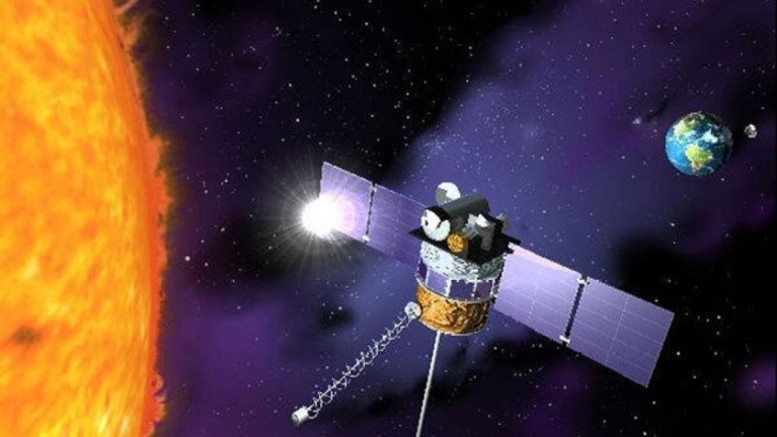 NOAA/DSCOVR. Launched in 2015.
NOAA/DSCOVR. Launched in 2015.
Since May 1998, NESDIS has operated the Defense Meteorological Satellite Program (DMSP) satellites on behalf of the Air Force Weather Agency.
New generations of satellites are developed to succeed the current polar orbiting and geosynchronous satellites, the Joint Polar Satellite System) and GOES-R, which is scheduled for launch in March 2017.
NESDIS runs the Office of Projects, Planning, and Analysis (OPPA) formerly the Office of Systems Development, the Office of Satellite Ground Systems (formerly the Office of Satellite Operations) the Office of Satellite and Project Operations, the Center for Satellite Applications and Research (STAR)], the Joint Polar Satellite System Program Office the GOES-R Program Office, the International & Interagency Affairs Office, the Office of Space Commerce and the Office of System Architecture and Advanced Planning.
National Marine Fisheries Service
The National Marine Fisheries Service (NMFS), also known as NOAA Fisheries, was initiated in 1871 with a primary goal of the research, protection, management, and restoration of commercial and recreational fisheries and their habitat, and protected species. NMFS operates twelve headquarters offices, five regional offices, six fisheries science centers, and more than 20 laboratories throughout the United States and U.S. territories, which are the sites of research and management of marine resources. NMFS also operates the National Oceanic and Atmospheric Administration Fisheries Office of Law Enforcement in Silver Spring, Maryland, which is the primary site of marine resource law enforcement.
